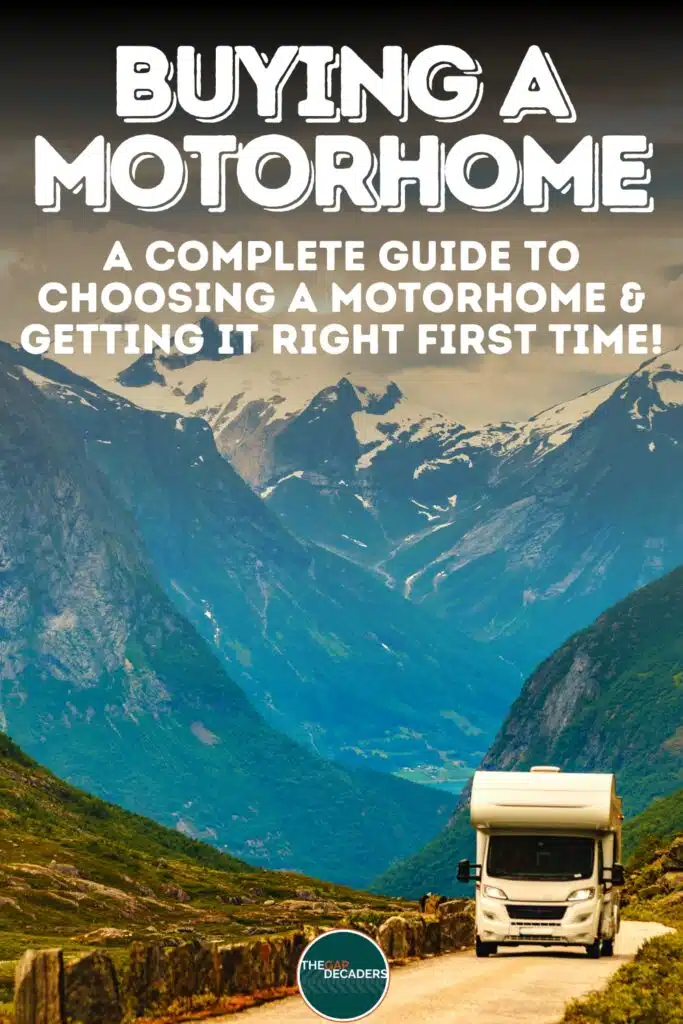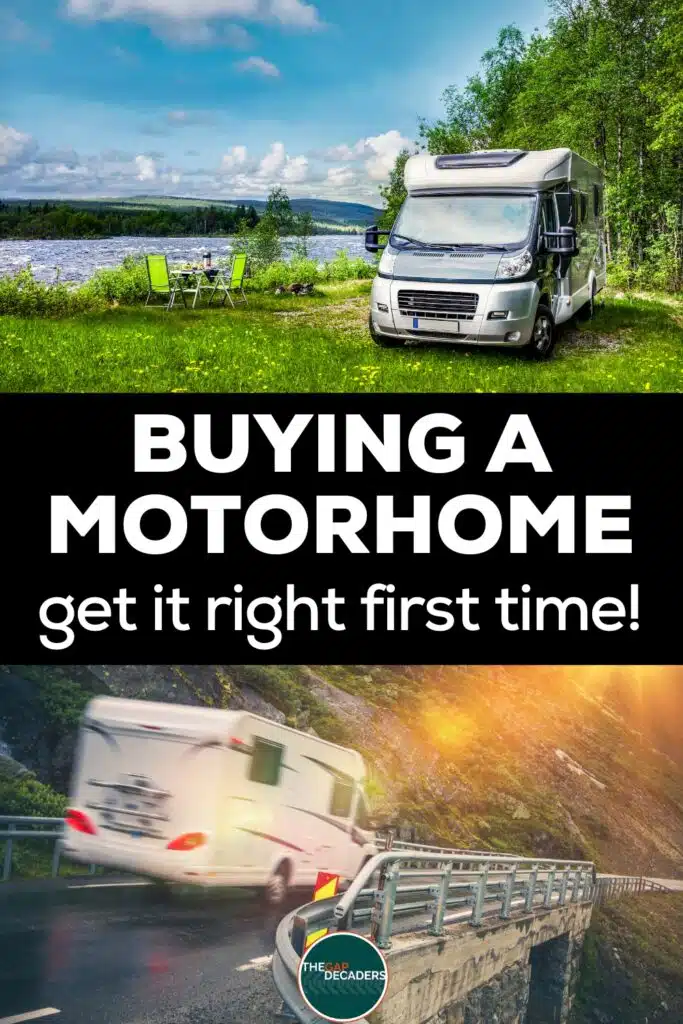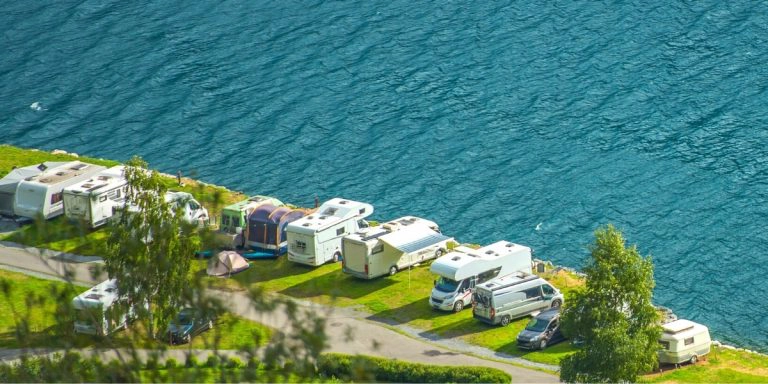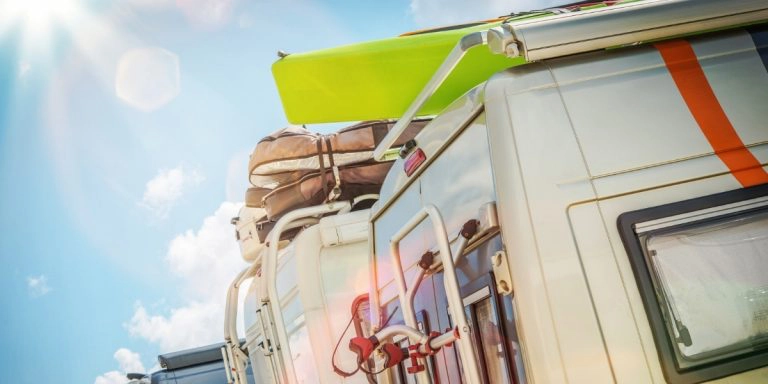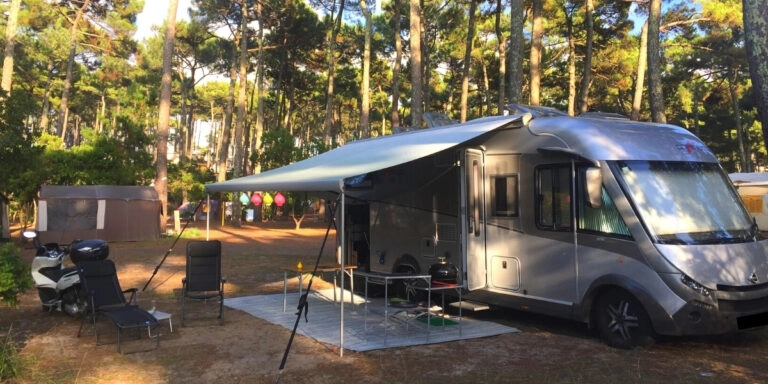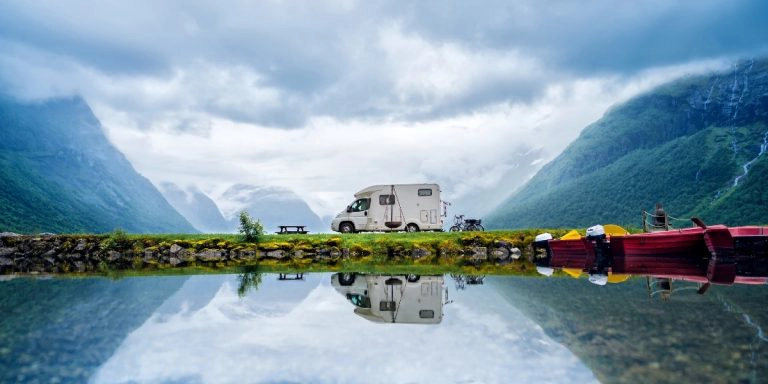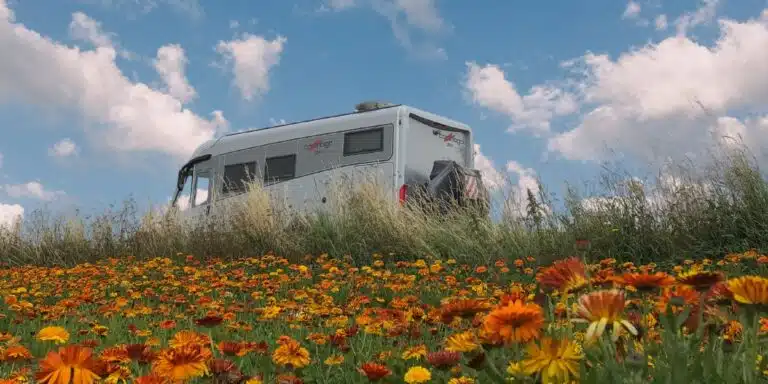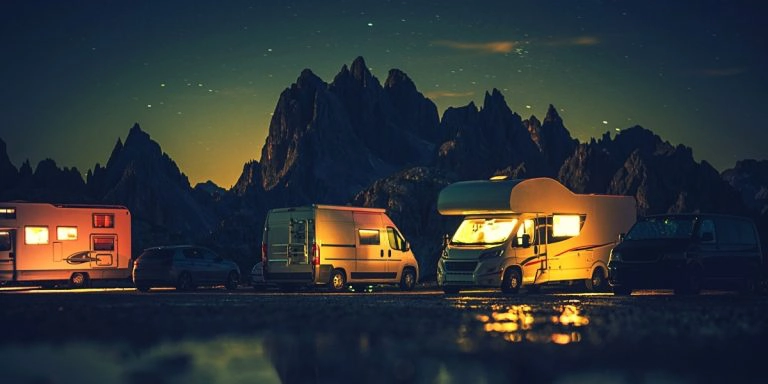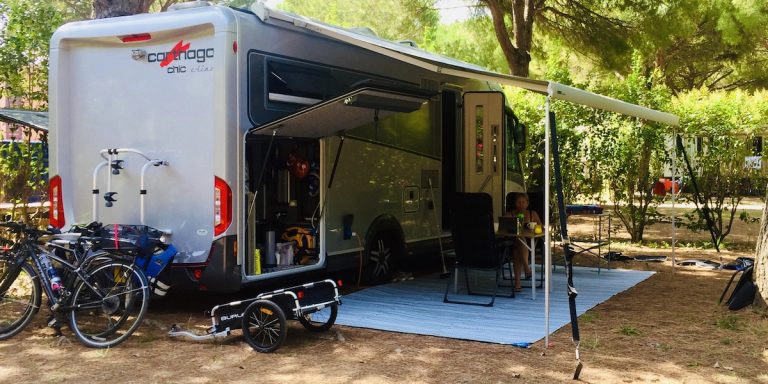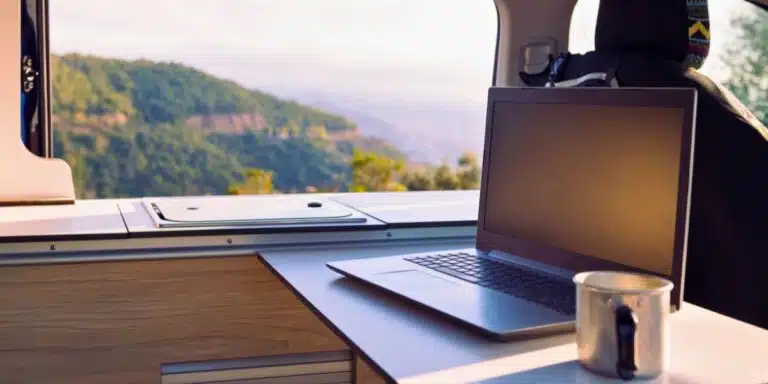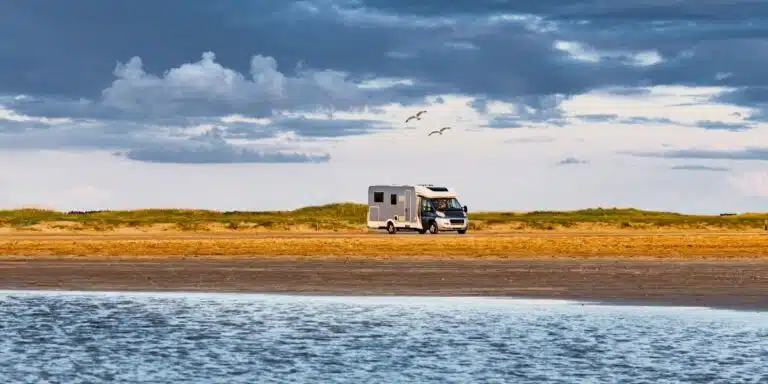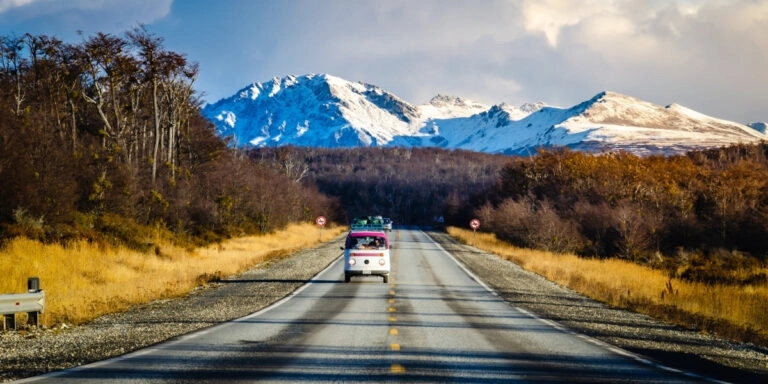This post may contain affiliate links, from which we earn an income. Click here to read our affiliate policy.
Thinking of Buying a Motorhome or Campervan?
Choosing a motorhome or campervan is one of the biggest buying decisions you’ll ever make. You’ll soon find that buying a motorhome for the first time can be daunting as you try and negotiate the confusing maze of layouts, manufacturers and specifications.
75% of motorhomers say it takes three tries to find the right van – we want to help you avoid that! Our motorhome buyers guide has all the info you need to make sure that when you choose a motorhome or van, it’s the perfect motorhome for you!
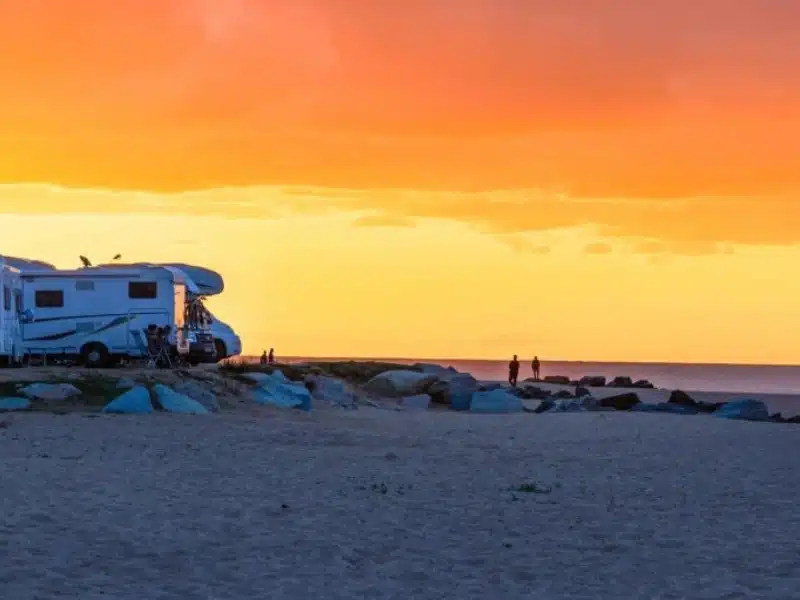
Things to Consider When Buying a Motorhome or Campervan
Ok, so you’ve checked off all the pros and cons of owning a motorhome and have chosen the motorhome lifestyle. The first thing you need to do is consider the following TWELVE questions:
These twelve motorhome questions are a great way to help you narrow down the type of motorhome that’s best for you and your needs and help you buy the right motorhome the first time around.

The Ultimate Motorhome Buyers Guide Ebook
If you want to see all our motorhome buying tips and advice in one place, plus lots of extra info and support you won’t find here, check out our ebook. With over 50 pages packed with helpful knowledge and first hand advice, you’ll save way more than you spend!
Types of Motorhome & Campervan Explained
A camper van or pop-up camper are essentially panel vans that have been converted to accommodate living space, often based on the Fiat, Ford Transit or Volkswagen.
My sons see this as a way cooler vehicle than a motorhome! It is this type of vehicle (bought or self-built) that inspires millions of #vanlife images on Instagram, although they don’t always portray the reality of living in a van! If you are interested in a self-build panel van conversion then check out this post about the cost of campervan conversions.
A motorhome often called a recreational vehicle (RV) in the States and a camping car in Europe, is traditionally a coach-built vehicle that offers a caravan-type living area built onto a base vehicle chassis.
The term ‘coach built’ (or class c motorhomes in America) simply means the coachbuilder, the motorhome manufacturer, takes the chassis of a suitable vehicle and coach builds the living area onto it.
The difference between a low-profile motorhome and an over-cab motorhome is at the front. An over-cab motorhome features a bulbous front that hangs over the cab while a low profile does not.
There are several advantages to choosing coach-built motorhomes over a panel van conversion. For a start, the square body shape allows for better use of the interior space, while the construction of the side and floor panels allows for better insulation.
BUT a campervan offers more flexibility in terms of where and how you travel because of its smaller size and being easier to park. It could also be used as a day or commuting vehicle and therefore save on the cost of also owning a car.
Recommended Reading
Campervan or Motorhome? Which Is Right For You?
32 Pros & Cons of Owning a Motorhome in UK & Europe
Camper Vans
What’s the best campervan to buy? It will depend on how you intend to use the campervan and how you like to travel. There are many different types on the market so start with a clear idea of what you want and need when choosing a campervan.
Many new campervans come with all the gear that motorhomes have and are very innovative in their design. Older campervans are great to personalise and can seem very romantic, but they won’t have the design and gadgets that make life easier in the best camper vans and are probably not suited to longer trips.
VW camper vans and the like make great dual vehicles for the school run and everyday use and are ideal for a weekend trip, but any longer and you may start to feel cramped (although you can fit a family of five into a VW camper van – who knew?).
Buying a campervan with a long wheelbase will help compensate for the lack of space, one of the disadvantages of campervan life. If you’re looking for a family campervan or touring and want to live in the great outdoors (and who doesn’t?) then a large campervan might be a good solution, if you get the right model and configuration.
Campervans can seem expensive when compared to motorhomes; this is because it’s less time-consuming to purpose-build the habitation area of a motorhome onto a chassis than it is to convert a panel van. If you’re thinking of buying a VW campervan as opposed to any other make, you will pay a premium, when in reality the functionality and specification are much the same as other makes.
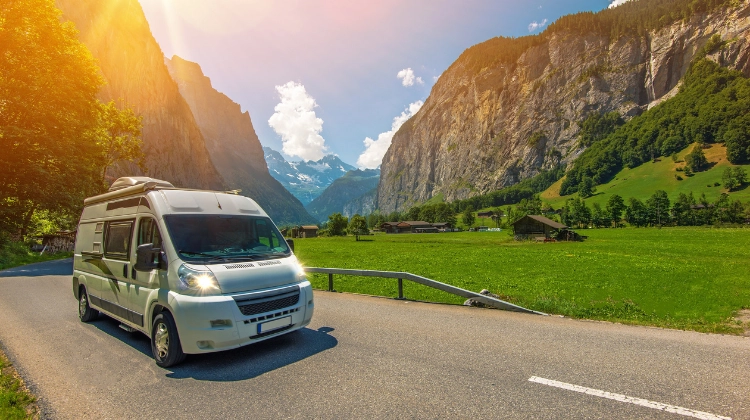
Low Profile Motorhomes
Low-profile motorhomes vary in length from around 5.5 metres to over 8m. Widths also vary from around 2.1 metres to up to 2.49m, so opt for a slimline model – under 2.25m wide – if you intend to explore narrow rural roads.
The sleek design of a low profile makes it more aerodynamic and so offers better fuel economy. Low-profile models tend to be lighter than over-cabs, too, meaning that they are better suited to a licence-friendly 3,500kg weight-limited chassis. You can read more about motorhome weights here.
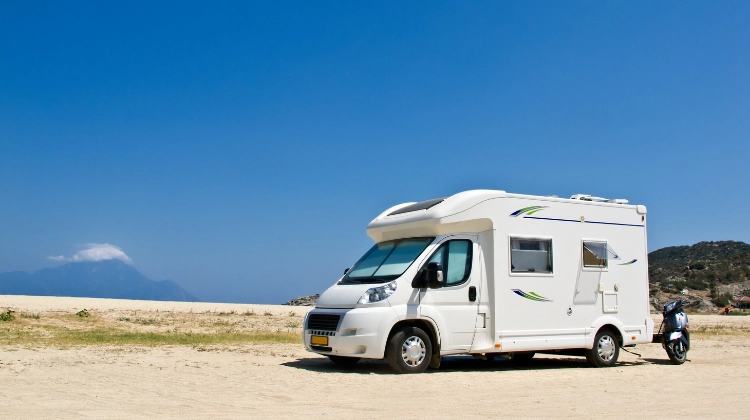
Over-Cab Motorhomes
The obvious attraction of an over-cab motorhome is the permanent double bed space over the driver and passenger seats. While headroom can be tight for adults and ladders might be off-putting, this space makes a great den and sleeping quarters for children.
Unlike a drop-down bed in a low profile, it leaves the lounge area undisturbed, so Mum and Dad can chill, too. You will though lose the seating provided by the driver and passenger seats as these will not be accessible from the habitation area.
Unsurprisingly, over-cabs are popular with young families, but with overall heights often stretching over 3 metres, these vehicles are not aerodynamic. Opt for a modern 150bhp engine at least, or if you can afford it something with a bit more oomph!
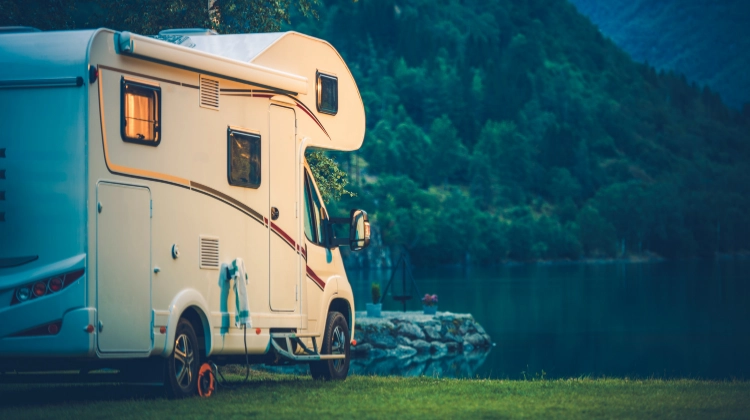
A Class Motorhomes
The ultimate in luxury motorhomes, class A motorhomes start with a chassis cowl, which has no external bodywork from the base vehicle. The dashboard will still be familiar, and all the exterior bodywork is manufactured by the motorhome company. Our American friends would call this an ‘integral’ motorhome.
The advantages are obvious. More space in the cab, usually a drop-down bed that lowers over the cab seats (without interrupting the lounge, as in a low profile) and fully insulated bodywork right up to the windscreen.
The panoramic view is great when driving, although the impression of extra width can be a little daunting at first. Bus-type (top-hung) mirrors found on A classes are useful when manoeuvring too.
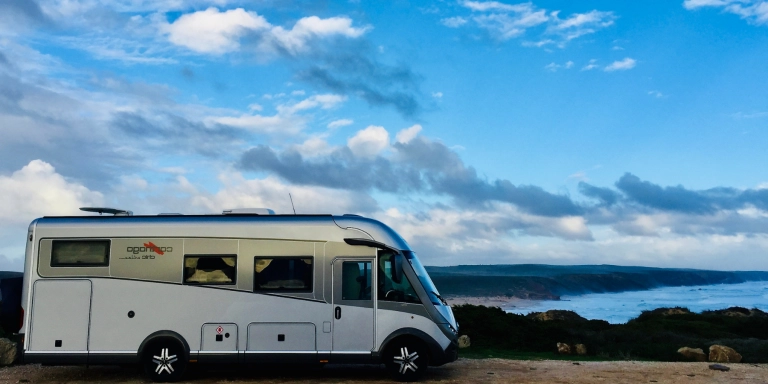
Other Types of Leisure Vehicles
There are many other types of leisure vehicles, not specifically classed as motorhomes, but also worth considering;
RV – an American recreational vehicle, available as imported vehicles in the UK. RV’s are styled differently to motorhomes and tend to be way larger and more expensive to run. Used RVs do not tend to hold their value as well as used motorhomes in the UK as their market for re-sale is much smaller.
Fifth Wheel – a large RV-like caravan but without an engine and attached to a pickup by a hitch and towed like a truck trailer. Fifth wheels should not be confused with travel trailers, which are pulled by their tow bars.
Demountable – small unit without wheels that is mounted onto the rear or a pick-up truck or flatbed. Different to a 5th wheel in that the unit itself does not have wheels. Living in a small camper like this may be challenging for any longer than a few weeks!

How Much Does it All Cost?
Motorhome travel is not cheap. You can spend anything from a few thousand pounds to over £100k to buy a campervan or motorhome. The best new motorhomes in the luxury market can cost upwards of £250k!
Some food for thought before you buy a motorhome;
When’s the Best Time to Buy a Motorhome?
People often ask us when they should buy a motorhome. If you are buying a new motorhome or looking for the latest motorhomes, start talking with your motorhome dealer in the spring or summer months of the year before you want your new van and expect at least an 8 to 12 month wait.
You may also be able to pick up a pre-specified model on special offer after the Caravan, Camping & Motorhome Show at the NEC in February.
Are you buying privately or looking to part exchange? The best months to buy a used motorhome are October and November. Previous owners start to sell as the season comes to an end and the choice is wide. You may get the best deal outside of these times when demand is less.
Look on the internet and you’ll find second-hand motorhomes for sale all year round, although you may not find a big selection of the best used motorhomes outside of the traditional selling periods.
Recommended Reading
An Easy Guide to Motorhome Weight: All You Need to Know
16 Tips to Help Manage Motorhome Payload
Motorhome Weights
All motorhomes have a quoted maximum weight, as well as a mass in running order figure (MRO). The first is the maximum the vehicle can weigh and still be legal on the road – this includes the weight of the motorhome with all your holiday kit and passengers on board.
Just to confuse us, there’s more than one term for this: GVW (gross vehicle weight), MAW (maximum authorised weight), maximum authorised mass (MAM), and maximum total permitted laden mass (MTPLM). Read our easy guide motorhome weight guide for more information.
Motorhome Payload
MRO (mass in running order) or unladen weight is the weight of the motorhome before it has been loaded with all your holiday gear, water and fuel. The manufacturer should be able to tell you the MRO of your motorhome but if they can’t, ask for it to be weighed at the nearest weighbridge, and make sure you see the ticket.
The payload is calculated by deducting the MRO from the MAM, the maximum authorised mass figure. So, a motorhome with an MRO of 3,000kg and a MAM of 3,500kg would have a payload of 500kg.
However, people, awnings, satellite TV systems, and even engine and transmission upgrades will eat into the payload figure. Then there’s all your gear you fill up the storage space with, like camping kit, like tools, clothes, food and drink. In every motorhome we’ve owned we have found that filling the storage areas means we are overweight!
Think carefully about weight and payload when choosing your motorhome. We know of people who have driven illegally for months because their motorhomes GVW is over 3,500kgs, or they find they just don’t have enough payload for their needs.
Recommended Reading
Motorhome Accessories: What Should You Have in Your Motorhome?
Motorhoming Tips for Beginners: Essential Know How for Motorhome Life
Motorhome Driving Licence Requirements
The type of driving licence you have will affect the maximum weight and type of motorhome you’re able to drive.
If you passed your car driving test on or after January 1, 1997, you are limited to driving a vehicle of no more than 3,500kg maximum weight. If you passed your test before that date you don’t have to worry about weight so much, you can drive a vehicle that weighs up to 7,500kg.
Note: On 10th June 2025, the UK Governemt revised the weight limit for category B licences, but only for electric or hydrogen-powered vehicles. If you hold a category B driving licence, you can drive an electric or hydrogen-powered vehicle with a maximum authorised mass up to 4,250kg. The vehicle must be a zero emission vehicle. The normal weight limit for petrol and diesel vehicles with a category B licence remains at 3,500kg.
However, once you reach the age of 70, you will only be licensed to drive vehicles up to 3,500kg unless you apply to the DVLA to keep your entitlement (and undergo regular medical checks). Do this and you can retain your 7.5-tonne entitlement in three-year chunks, repeating the application process after the end of each.
Motorhome Layouts Explained
Aside from the type and size of motorhome best suited to your needs and driving capabilities, choosing the best motorhome layout is one of the most important decisions you need to make. Think of it as you would when buying a house; how much space do you need in each area?
Berths and Beds
Berths and beds are often the defining factors when choosing a motorhome layout. How many people will need to sleep and/or travel in your motorhome? Do you want a double, twin or French bed (where a corner is cut away to accommodate a shower or loo), bunk beds for the kids?
If you are looking for a large garage, then a fixed twin will be the best configuration as they can be sited higher to allow for garage space underneath. Many have steps to help you get in and an infill to make one large double bed.
Some layouts don’t have a fixed sleeping area and require you to make up your bed every night…it’s novel at first but quickly becomes a pain!
A fixed bed means you don’t need to do this. Traverse beds mean you sleep side to side i.e. head to one side, feet to the other and if you have to get up in the night, one of you has to climb over the other. Again, not ideal if you need an old person’s pee every night and you’re away for months on end!
If you go for a two-berth, consider what happens if one of you is sick; we have been in this position and have been so grateful for the extra drop-down bed. Make sure whichever bed you choose is long enough, sounds obvious, but you don’t want to have to put your feet into the shower enclosure every night!
Travel seats for all occupants also need to be considered. We’d recommend crash-tested three-point seat belts for all. If you need six seatbelts, then two will be in the cab and the other four will have to be located in the lounge, meaning that the lounge is likely to have to consist of an L shape with two belted seats facing the rear and two facing to the side.
If you only need two or four seatbelts, your lounge choice is much more flexible. Bizarrely, some motorhomes have more beds than seatbelts, so this is worth checking as well.
Kitchen & Dining
When it comes to the kitchen, ask what you will really need. If full-timing this is likely to be more than you would require for a two week holiday. Preparation space is usually at a premium, so look for clever solutions like pull-out worktops and sink covers which will give you more room.
Campervans sometimes have kitchen spaces which extend outside and so require the main door to be open when cooking.
Consider how many people need to sit at the table at mealtimes or will you be aiming to eat outside? If you have swivel seats, this will provide you with more dining capacity.
All motorhomes come with a fridge or fridge freezer combo (although unlike a home freezer, motorhome freezers are only designed to store already frozen food). This will run from your 12v battery when travelling and either gas or electric when on EHU.
Fridges generally do not run from your leisure battery as they would drain it in a few hours. You can read more about motorhome electrics here.
Recommended Reading
An Easy Guide to Motorhome Electrics
How to Take Your First Motorhome Trip (& have an amazing time!)
Bathroom
With bathrooms, what are you likely to use? Just a portable toilet for midnight emergencies, or are you going to need a complete bathroom with a fixed cassette toilet, basin and separate shower?
Most campsites have excellent facilities these days so, unless you plan to wild camp, do you really need an all-singing all-dancing bathroom?
Try doing a Google search for ‘motorhome floor plans’ to get an idea of what is available and what you like. The questions we asked at the start of the article should help you puzzle all of this out when it comes to the crunch and you have to choose a motorhome layout.
Try Before You Buy!
Before you even think about choosing, let alone buying anything, take the following steps;
Buying Used Motorhomes
As tempting as it may be, do not commit the first time you have viewed a particular motor home. Yes, you may well be in love but go home, sleep on it and ask all the questions you need to feel comfortable, particularly around service history, outstanding finance (get an HPI check to put your mind at rest) and reasons for sale.
This is a massive and expensive purchase, getting it right the first time is by far the best way to buy a motorhome.
If you are searching for used motorhomes on eBay, Facebook and other online sites where private individuals can advertise a motorhome for sale, make sure you are fully aware of the types of scams in operation.
Never, ever part with any money until you have seen the motorhome or campervan, and are 100% satisfied with the seller’s credentials and legitimacy. Use online forums to ask about dealers and the best place to buy a used motorhome, from people who have actually used the service.
If you’re buying from a private seller, ask to view the motorhome at the property where it’s registered. If the motorhome is in a storage place and cannot be driven, then ask to meet the seller at the registered address of the motorhome to ascertain that they do actually live there.
A genuine seller will not mind this and want you to be reassured. Avoid meeting in a car park or lay-by, for example, this is not a good sign and could mean you’re viewing a stolen van.
You should arrange for an independent damp and habitation check when buying a used motorhome – the Approved Workshops scheme offers this service at a reasonable cost. The damp check will check for any signs of water ingress and use a meter to assess areas of the van for damp.
Once it is damp, it can be very costly to fix and repair the subsequent damage. A habitation check will make sure that all the safety-critical elements and gas systems are working as they should.
Make sure you get a thorough handover on collection. Ask the seller to take you through the manual and show you how everything works. You’ll need to understand the control panel, how things like a solar panel and inverter work and any retro-fitted items.
We had a switch on a twelve-year-old Knaus motorhome and after two years we still had no idea what it did!
If you’re wondering what else to look for when buying a motorhome, use our buying a used motorhome checklist to help you on the day you view. It’s got a comprehensive list of everything you should be looking at, what checks to complete plus a handy list of important points to remember and questions to ask when buying a motorhome.
Good luck with your buying your motorhome. Here’s to a long and happy journey!
Are you looking for more motorhome advice and tips? Check out these top posts…
Working Whilst Traveling in Your Van
Keep Your Motorhome Safe with Moving Intelligence UK
Must-Have Storage Ideas for Your Home on Wheels
Must-Have Mobility Aids for a Comfortable Motorhome Journey
MOT for Long-Term Travel Outside the UK: All You Need to Know
Reinvent Your Life: The Ultimate Gap Year Guide for Over 50s
Love it? Pin it!
